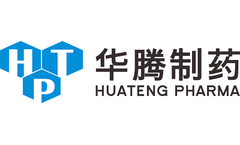Drug Screening In Drug Resistant Articles & Analysis
55 articles found
The BCL2 gene, short for B-cell lymphoma 2, is a critical regulator of apoptosis, or programmed cell death. It belongs to a larger BCL2 gene family, which includes both pro-apoptotic and anti-apoptotic proteins that maintain a delicate balance between cell survival and cell death. Dysregulation of this gene family is implicated in a variety of diseases, most notably cancer. What is BCL2? The ...
The effectiveness of current therapies is often hindered by the ability of certain cell populations to develop resistance, leading to treatment failure and disease progression. This article explores the importance of drug screening in drug-resistant cells and its implications for advancing therapeutic strategies. ...
By creating cell lines with specific genes “knocked out,” scientists can investigate disease mechanisms, screen drug candidates, and develop gene therapies more effectively. This article explores the significance, methodologies, applications, and future prospects of custom knockout cell lines. ...
These cell lines serve as essential models for studying the biology of colorectal cancer, testing new therapies, and exploring the mechanisms of drug resistance. What are Colorectal Cancer Cell Lines? Colorectal cancer cell lines are cultured cells derived from tumor tissues of patients diagnosed with colorectal cancer. ...
Lysozyme, also known as muramidase or N-acetylmuramide glycanhydrolase, is an essential enzyme found widely in nature and recognized for its potent antimicrobial properties. First discovered by Alexander Fleming in 1922, lysozyme has been a subject of considerable scientific and commercial interest owing to its role as an effective biological defense mechanism. Commonly found in egg whites, human ...
Alfa Cytology introduces comprehensive small molecule PARPi development services for combating various diseases. Alfa Cytology, a developer of oncology innovation, has announced its latest venture small molecule Poly(ADP-ribose) polymerase inhibitor development services. This cutting-edge initiative represents a major advancement in creating more precise and versatile cancer treatment ...
What Is PROTAC Technology? Proteolytic targeting chimera (PROTAC) is a new type of drug design technology that works by inducing the degradation of target proteins. Unlike conventional small molecules that typically inhibit protein function, PROTACs facilitate the ubiquitination and subsequent degradation of specific proteins. This bifunctional molecule consists of two distinct elements: a ...
In recent years, the landscape of sequencing technologies has undergone a transformative shift, transitioning from research settings to the realm of clinical laboratories. This transformation has been catalyzed by rapid technological advancements and significant cost reductions. Despite a multitude of microorganisms known to inflict human infections, prevailing diagnostic techniques merely ...
Understanding Clonality Analysis Clonality refers to the origin of a cell population from a single 'parent' or progenitor cell through asexual reproduction or division. This concept is vital in cancer studies as it helps track the development of tumor cells from a single mutated cell. Clonality analysis is thus essential in understanding the evolution and the spread of cancerous cells in a ...
With the approval of many antibody-drug conjugation (ADC) drugs around the world since 2019, conjugate drugs have developed into one of the hottest tracks in the pharmaceutical industry. Not only the research and development of traditional ADCs continues to be hot, but various new drug conjugates (NDCs) are also blooming. In this article, we make statistics on the research and development ...
The concept of ADCs was first proposed by Nobel Prize winner Paul Ehrlich in 1913. But it was not until 1975, when hybridoma technology began to be used to produce monoclonal antibodies, that the era of ADC drug development truly began. Driven by increasingly mature technology, ADC drugs have gone through three iterations (Fig. 1). Although ADCs have gone through three iterations, current ...
Understanding Clonality Analysis Clonality refers to the origin of a cell population from a single 'parent' or progenitor cell through asexual reproduction or division. This concept is vital in cancer studies as it helps track the development of tumor cells from a single mutated cell. Clonality analysis is thus essential in understanding the evolution and the spread of cancerous cells in a ...
With the rapid development of antibody-drug conjugate (ADC), more and more companies have entered the field of ADC research and development, and various types of ADC technologies and branches have emerged. Bispecific antibody conjugates (BsAb ADCs) are one of the emerging new technologies. The high specificity of bispecific antibodies enables more precise targeting of tumor cells. On the other ...
What are Antimicrobial Peptides? Antimicrobial peptides (AMPs) are naturally occurring peptide molecules found in various organisms, including humans, animals, plants, and microorganisms. These peptides play a crucial role in the innate immune system's defense against microbial infections, exhibiting antimicrobial properties that can inhibit the growth or kill bacteria, fungi, viruses, and even ...
Vaccines are considered one of the most successful medical interventions in the past few centuries, aiming to harness the human immune system and generate lasting protection against specific diseases. Traditional vaccines rely on the use of inactivated pathogens to trigger an immune response. However, many of these formulations carry a high risk of causing allergies or autoimmune reactions. ...
In recent years, PROteolysis TArgeting Chimeras (PROTAC), which utilizes the cell's own degradation mechanisms to eliminate specific disease-related proteins, has emerged as one of the most promising methods. Apart from PROTAC, various targeted protein degradation (TPD) strategies are emerging, involving molecular glue, Autophagy-Targeting Chimera (AUTEC), Autophagosome Tethering Compound ...
Importance of Validating Drug Resistance Genes While drug resistance genes identified through plasmid sequencing may show resistance in heterologous hosts, it is imperative to ascertain their resistance in their natural reservoirs. Additionally, drug-resistant ...
According to the latest data, breast cancer has overtaken lung cancer to become the most common cancer among women, and the death rate is the second highest among female tumors, seriously affecting the physical and mental health of women around the world. Patients with abnormal expression of human epidermal growth factor receptor (HER2) account for 15%-20% of all breast cancers, which is highly ...
PROTAC technology has been in development for more than 20 years. PROTAC proof-of-concept studies date back to 2001, when Crews' team tested the possibility of artificially induced intracellular protein degradation with a peptide that was too large in molecular weight and required cells to penetrate the peptide to improve cell permeability. The discovery of the first small molecule PROTAC and the ...












